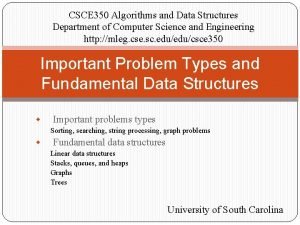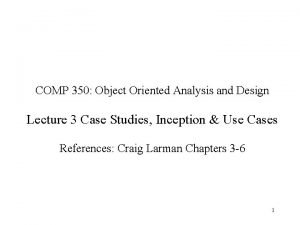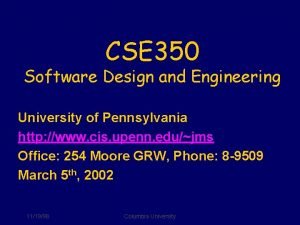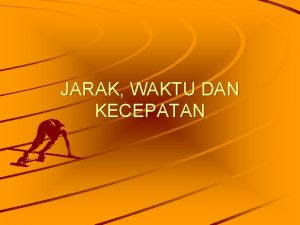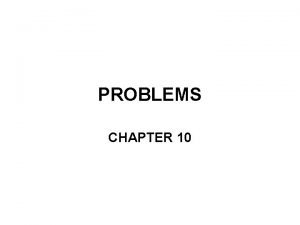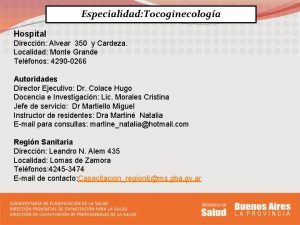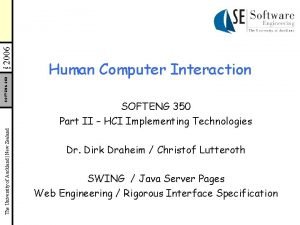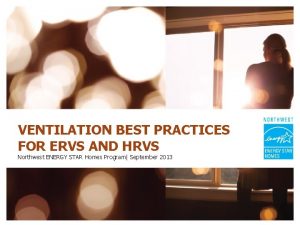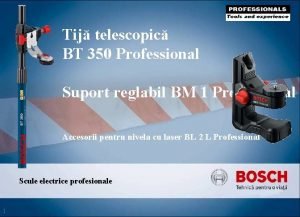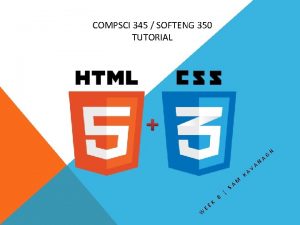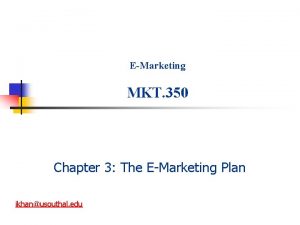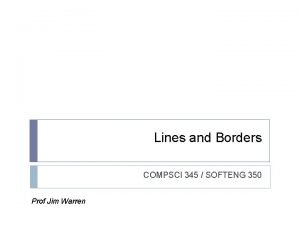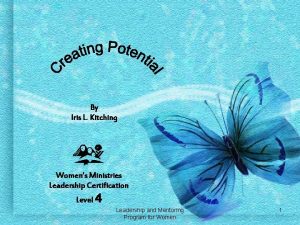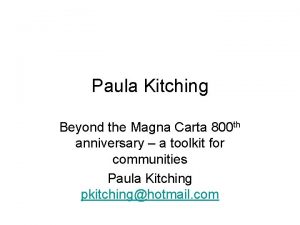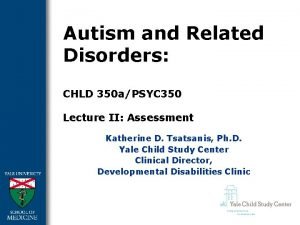Including Everyone HNES 350 Melissa Kitching Including Everyone






















- Slides: 22

Including Everyone HNES 350 Melissa Kitching

Including Everyone Inclusion § Inclusion is the ‘process of crating a learning environment that is open to and effective for all students whose needs and abilities fall outside of the general range of those children of similar age or whose cultural of religious beliefs differ from a majority of the group. § Main Idea = ALL STUDENTS ARE INCLUDED

Laws Tied to Inclusion in PE § Individuals with Disabilities Education Act - Students with disabilities are to be educated in the least restricted environment. § Least Restricted Environment - Students with disabilities are to be educated with their non disabled peers as much as possible

How is Inclusion Beneficial? § Opportunity to Learn § Learning from those who appear to be unlike them § Experiencing life in someone else’s shoes § Learning about Diversity § Finding common ground despite physical, mental, emotional differences

Outlook on Inclusion § As a PE it is our jobs to adapt our activities to accommodate all learners § Allocating sufficient time and opportunity for everyone to learn § Designs meaningful, success-orientated tasks for all § Communicated with clarity and enthusiasm, supports ALL students

Adaptations to Meet Special Needs § Instruction - May be printed out and posted where students can see if they need to be reminded - Peer partner who assists them with the activity § Rules - Time requirements and outs may be eliminated - Rules can be relaxed § Equipment - Modifications to equipment can be made - Larger equipment § Environment - Boundaries clearly marked - Adequate space is given

Teaching Strategies § Multi-Level Approach - Students work in the same area, but each student has ability specific goals - Therefore, comparison is eliminated and students are focusing on achieving there own goals. - When goal is achieved, the student can either increase difficulty or stay the same - Eliminating competition

Teaching Strategies § Task Analysis - Task is divided into components for easier understanding - Depending on disability, tasks can be further broken down into sections

Working Together with Faculty § Each student with special requirements must have a support system including Parents, Tutors, Paraprofessionals, etc. § Discuss options together to decide what is best for the student both Physically and Emotionally § Refer to student IEP’s to track progress

IEP – Individualized Education Plan § Documentation on Student including: Present Level of Performance Identifies attainable annual goals/objections Instructions regarding time to be spent in PE class

Areas for Inclusion § Special Needs § Gender § Culture § Key Focus – ABILITY

Special Needs § When designing health-related fitness plans for students with special needs remember that: § Disabled students will display the same physiological responses to exercise as a non disabled person § They will also benefit from training and it helps with their performance § Don’t set limitations on students based on their disability § Look at what they CAN do instead

Gender Inclusion § Avoid separating gender as much as possible § Creating boy and girl groups is not acceptable § Instead based it on ability

Cultural Inclusion § Get to know your students § Surveys § Questionaries' § What do they like to do Include other cultures § Create unit themes § Integrate cultures into activities § Incentives

Culture Inclusion Con’t § Have choices for students who must adhere to cultural dress § Example: designating a certain skirt as being the gym clothes skirt (if a female student isn’t permitted to wear shorts)

Ability Inclusion § Students who are Physically Gifted - Do not neglect or assume they will figure out activities on their own - Allow them to help other students - Challenge their abilities - Provide extensions in activities

Ability Inclusion § Students who are having difficulty - Encourage them - Have them set personal goals to achieve - Offer choices for activities so they don’t feel pressured

Today’s Truth § Children with disabilities have lower levels of physical fitness, higher levels of obesity and participate less in school based or after school physical activity programs that there peers without disabilities (Kim, 2009) § Children may avoid activity in fear of failure or embarrassment

Things to Remember § Always plan to adapt lessons to meet specific needs of students § Every student is not the same and will need personalized feedback

Activity § Stimulating Asthma in PE - Straw activity

Activity 2 § Autism § This activity is designed to show people § with autism are bothered by things most people § don’t notice. People with autism are often extra § sensitive to noise, movement and even things § like background noises most of us don’t notice. § Remember, not everyone with autism has these § problems.

Person #1: Person who has Autism Person #2: Stand behind Person #1, rub edge of index card behind their neck. Not hard but repeatedly Person #3: Repeat Person #1’s name closely by their ear Person #4: Pat Person #1’s head and shoulder repeatedly Person #5: Read the paragraph in a normal voice to Person #1 and ask them questions about what you just read to them Questions: Person #1 – How did it feel to have to concentrate when so much commotion was going on?
 Hope you are doing well
Hope you are doing well Xkcd 350
Xkcd 350 Csce 350
Csce 350 Comp 350
Comp 350 Cisco aironet 350
Cisco aironet 350 300 sayısının 30'u kaçtır
300 sayısının 30'u kaçtır Cse350
Cse350 Jarak yogyakarta ke malang 350 km
Jarak yogyakarta ke malang 350 km Nt$1 350 to usd
Nt$1 350 to usd Eli 350
Eli 350 Cis 350
Cis 350 Alvear y cardeza 350
Alvear y cardeza 350 Dropbox csce
Dropbox csce Auckland
Auckland Ptt-350
Ptt-350 Lifebreath 350 dcs
Lifebreath 350 dcs Bt 350 professional
Bt 350 professional 350 forts in maharashtra
350 forts in maharashtra Ptt-350
Ptt-350 Xp-67
Xp-67 Softeng 350
Softeng 350 Napkin plan in e marketing
Napkin plan in e marketing Compsci 345
Compsci 345


